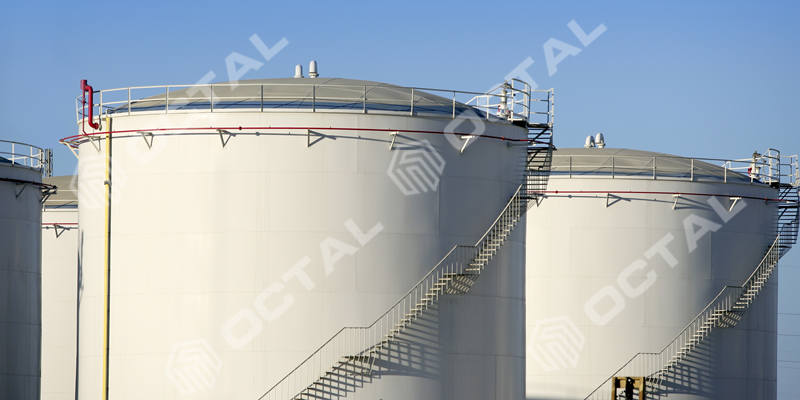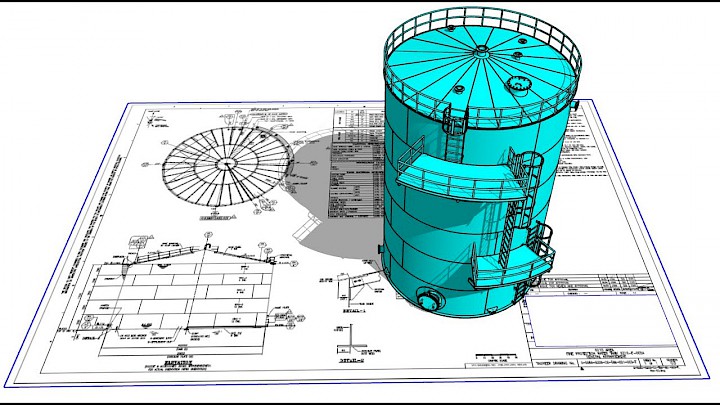Key Reasons Why API 650 Welding Inspection Is Necessary for Every Project
Wiki Article
A Detailed Take A Look At the Setup Refine of Welding Evaluation Techniques
Welding inspection is a crucial procedure that ensures architectural integrity and safety and security. The setup of inspection methods involves a number of organized actions, each integral to accomplishing reliable results. From preparation and tool option to conducting non-destructive and aesthetic examinations, each phase demands mindful focus. Understanding these procedures can substantially enhance quality control in welding projects. What difficulties emerge in executing these methods, and just how can they be effectively attended to?Understanding the Significance of Welding Assessment
Welding examination is a crucial part of guaranteeing architectural stability and safety and security in building and manufacturing procedures. This technique entails assessing bonded joints for flaws, making sure that they fulfill details requirements and guidelines. By methodically assessing weld high quality, assessors can recognize concerns such as splits, gaps, and insufficient fusion, which can jeopardize the strength and sturdiness of structures.The relevance of welding inspection expands past prompt safety and security issues; it assists avoid pricey failings and prospective risks in the lengthy term. Efficient assessment methods foster compliance with market standards, thereby boosting the general dependability of welded components. Furthermore, a durable inspection process adds to keeping the online reputation of contractors and producers, as it ensures customers of the high quality of their projects. Inevitably, recognizing the value of welding examination is vital for promoting safe building practices and making certain the durability of important framework and items.
Picking the Right Tools for Evaluation
When picking the suitable devices for inspection, it is important to contemplate the specific demands of the welding process and the materials entailed. Numerous evaluation techniques, such as aesthetic, ultrasonic, and radiographic testing, necessitate distinct devices customized to their unique demands. For visual evaluations, devices like magnifying glasses and calipers are essential for evaluating weld top quality. Ultrasonic testing needs customized tools with the ability of transmitting and obtaining acoustic waves to discover interior problems. Radiographic screening, on the various other hand, makes use of X-ray or gamma-ray resources along with delicate movie or digital detectors to expose variances.
In addition, individual safety equipment (PPE) is vital to assure the safety and security of assessors throughout assessments. Choosing the right devices not only improves the accuracy of evaluations however likewise adds to the general integrity and safety of the welding job. Consequently, an extensive understanding of offered tools and their applications is imperative for reliable welding evaluation.
Preparing for the Assessment Process
Before launching the assessment process, it is necessary to develop a comprehensive strategy that lays out the extent and purposes of the assessment. This plan needs to consist of specific standards that define what comprises acceptable quality in the welding work being inspected. Recognizing the relevant codes and criteria is crucial, as they will certainly direct the inspection standards and approaches.In addition, personnel entailed in the evaluation must be effectively trained and accredited in welding examination techniques to assure dependability and precision. A checklist can be helpful in arranging the different facets of the assessment, ranging from tools readiness to environmental conditions that could impact the evaluation.

Logistical considerations such as scheduling, available resources, and interaction in between team participants should be resolved. By preparing methodically, assessors can improve the efficiency of the evaluation and make sure that all essential elements are appropriately taken into consideration prior to continuing with the evaluation itself.
Performing Aesthetic Assessments

Conducting aesthetic assessments is a necessary step in the welding evaluation process, calling for mindful prep work to guarantee effective evaluation. Examiners need to be familiar with crucial flaw signs that can signify prospective concerns in weld quality. By focusing on these elements, one can boost the general reliability of the assessment results.
Getting Ready For Visual Assessment
Visual inspection offers as an essential primary step in the welding evaluation process, guaranteeing that any type of prospective problems are determined early (API 650 Welding Inspection). Correct prep work is essential for efficient visual examination. Assessors must begin by assessing pertinent paperwork, consisting of welding procedures and specifications, to understand the project demands. They have to collect necessary devices, such as magnifying glasses, flashlights, and proper individual protective devices (PPE) An extensive assessment of the examination area is crucial; assessors should verify it is cost-free and clean of blockages. Furthermore, it is essential to develop ideal lighting conditions to enhance visibility of welds. By taking these primary steps, assessors can produce an atmosphere for identifying inconsistencies and assuring the honesty of the welded frameworksTrick Issue Indicators
An extensive understanding of crucial defect signs is crucial throughout aesthetic assessments to assure the top quality and safety and security of welded joints. Inspectors must focus on specific indicators such as splits, porosity, undercuts, check my blog and insufficient combination. Splits might look like sharp lines and can compromise architectural stability. Porosity materializes as tiny openings that can weaken weld strength. Undercuts, which are grooves along the weld edge, can result in stress concentration. Insufficient blend indicates that the weld steel did not appropriately bond with the base product, leading to a weak joint. By methodically recognizing these issues, inspectors can ascertain conformity with industry criteria and improve the total dependability of welded structures, ultimately adding to much safer operational conditions.Executing Non-Destructive Testing Techniques

Various non-destructive testing (NDT) techniques are integral to ensuring the honesty of welded frameworks without compromising their performance. These click approaches enable assessors to examine weld quality and identify flaws without creating damages to the products being examined. Usual NDT techniques include ultrasonic testing, radiographic screening, magnetic fragment screening, and color penetrant screening. Each approach offers a particular purpose, attending to different types of defects such as fractures, porosity, or insufficient fusion.
Executing NDT methods calls for a methodical method, starting with choosing the proper technique based on the products and the nature of the weld. Educating employees in these methods is vital for precise outcomes. Furthermore, establishing clear treatments and criteria guarantees uniformity throughout the assessment procedure. By integrating NDT into the welding assessment process, organizations can enhance the integrity of their products while decreasing possible risks connected with architectural failures. This proactive strategy ultimately adds to keeping security and top quality criteria in welded building and constructions.
Documenting and Examining Evaluation Outcomes
pop over here Reliable documentation and analysis of assessment outcomes are vital elements of the welding inspection process. Exact documents of evaluation findings act as a referral for quality guarantee and compliance with industry requirements. API 650 Welding Inspection. Assessors should utilize electronic systems or structured kinds to log details such as the kind of weld, examination approaches utilized, and any type of inconsistencies identified during the analysisComplete evaluation is important as soon as data is collected. This involves comparing outcomes versus developed standards to recognize fads or recurring issues. Analytical tools might be used to quantify defects and analyze their impact on total weld top quality.
Reliable interaction of searchings for to relevant stakeholders is essential. Reports and summaries need to be clear and succinct, highlighting vital understandings and referrals for corrective activities. By methodically examining and recording examination results, organizations can cultivate continuous renovation in welding practices and boost product honesty.
Regularly Asked Questions
What Credentials Are Needed to End Up Being a Welding Inspector?
To come to be a welding examiner, one usually needs relevant qualifications such as AWS CWI, in addition to experience in welding methods, expertise of welding codes, and proficiency in inspection techniques to ensure quality and safety standards.Exactly How Often Should Welding Inspections Be Carried Out?
Welding evaluations must be performed on a regular basis, normally after each weld is finished, and regularly throughout tasks. Variables such as task complexity, sector criteria, and regulatory demands can influence the regularity of these evaluations.What Is the Expense of Welding Assessment Solutions?
The expense of welding examination services differs substantially based on variables such as project complexity, dimension, and area. Commonly, costs range from $100 to $150 per hour, with added fees for specialized screening and certifications.Are There Certifications for Welding Inspectors?
Yes, there are various qualifications for welding inspectors, consisting of those provided by the American Welding Society (AWS) and the International Institute of Welding (IIW) These certifications ensure assessors possess the necessary skills and understanding for efficient analyses.
Just how Do I Select an Inspection Company?
To select an assessment company, one need to evaluate certifications, experience, market credibility, and client reviews. Furthermore, comparing service offerings and pricing can assist guarantee the chosen company fulfills particular project requires efficiently.Furthermore, personnel involved in the inspection needs to be sufficiently educated and licensed in welding evaluation methods to ensure dependability and precision. Carrying out aesthetic examinations is a necessary action in the welding inspection process, needing cautious preparation to ensure reliable evaluation. Aesthetic assessment serves as an essential first step in the welding examination procedure, assuring that any kind of possible issues are recognized early. Efficient documents and analysis of inspection results are important components of the welding examination process. Welding inspections should be conducted frequently, usually after each weld is completed, and periodically throughout tasks.
Report this wiki page